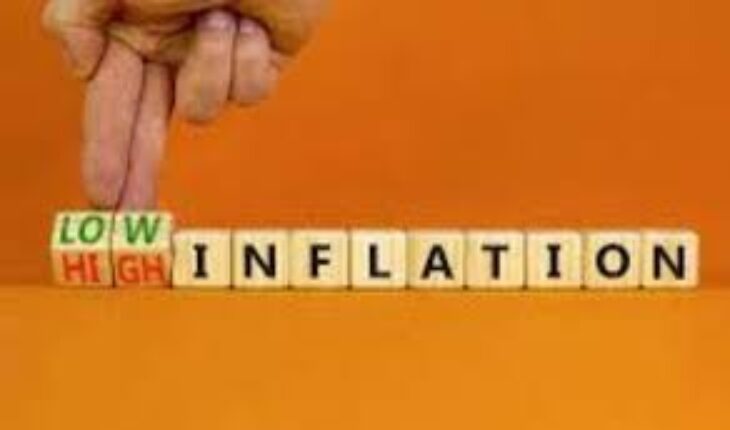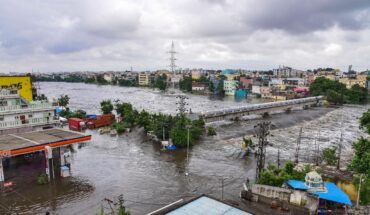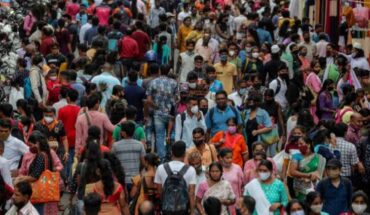
According to the Ministry of Statistics and Program Implementation, Consumer Price Index (CPI) based inflation stood at 4.87 percent in the month of October, while retail inflation stood at 6.77 percent in the month of October 2022. In the month of September this year, retail inflation was at the level of 5.02 percent, while in the month of August it was at the level of 6.83 percent and in the month of July it was at the highest level of 15 months at 7.44 percent. This is the third consecutive month after July, when retail inflation has declined. At the same time, this is the second consecutive month when retail inflation is less than 6 percent, the maximum tolerance limit set for inflation by the Reserve Bank of India.
Analysis shows that there has been a slight decline in the prices of food items in the month of October. The food inflation rates this month was 6.61 percent, whereas in the month of September it was 6.62 percent, while in the month of October 2022 it was 7.01 percent. Retail inflation in rural areas stood at 4.62 percent in October 2023, while food inflation stood at 6.71 percent. Thus, both retail inflation and food inflation in rural areas remained high in the month of October.
There has been a rise in the prices of pulses in the month of October. This month the inflation rate of pulses reached the level of 18.79 percent, whereas in the month of September it was 16.38 percent. At the same time, the inflation rate of grains and products made from them was 10.65 percent in the month of October, which was 10.95 percent in the month of September. The price of eggs has also reached a high level of 9.30 percent. The inflation rate of fruits stood at 9.34 percent in the month of October. However, there has been a significant decline in the price of spices, and it has come down to the level of 2.76 percent in the month of October, which was 23.06 percent in the month of September. The price of vegetables has also come down to the level of 2.70 percent in the month of October, which was 3.39 percent in the month of September.
The reduction in retail inflation will provide direct relief to the common people and businessmen. This will make it easier for the Reserve Bank of India to cut the repo rate, which will reduce the loan rate and will also accelerate economic activities. With the help of monetary review, the Reserve Bank continuously tries to increase the pace of development of the country.
Along with retail inflation, Wholesale Price Index (WPI) has also decreased in the month of October. This month it has been below minus 0.52 percent, whereas in October 2022 it was 8.67 percent. This is the seventh consecutive month since April this year, when wholesale inflation has been below zero. Wholesale inflation was minus 0.26 percent in the month of September.
Retail inflation being below the tolerance level and wholesale inflation being below zero means that inflation is under control. This is also confirmed by the stability of the rupee over the past months and the fuel cost remaining almost unchanged. However, due to fluctuating prices of vegetables and other food items, there will be minor fluctuations in the inflation level. However, due to favourable weather conditions, there is little possibility of much fluctuation.
According to the Index of Industrial Production (IIP) data released by the National Statistical Office (NSO) on November 10, India’s industrial production stood at 5.8 percent in the month of September, which was 3.3 percent in September 2022. There has been significant growth in the manufacturing and mining sectors compared to last year. However, there has been a decline on monthly basis, as it was 10.3 percent in the month of August. Due to continuous festivals from October to December, it is expected that the demand for various products will increase, which will improve the IIP figures on monthly basis also.
Due to softening of inflation, the Central Bank had kept the repo rate unchanged at 6.50 percent in the monetary review held in October, so that economic activities could accelerate. Keeping the repo rate unchanged on one hand provided relief to borrowers and on the other hand economic activities also gained momentum.
The Reserve Bank mainly tries to fight inflation by increasing the repo rate. When the repo rate is high, banks get loans from the Reserve Bank at expensive rates, due to which banks also give loans to customers at expensive rates. By doing this, the liquidity of currency in the economy reduces and due to lack of money in people’s pockets, the demand for goods decreases and due to high prices of goods, their sales decrease, which leads to decline in inflation. Similarly, when there is a slowdown in the economy, efforts are made to increase the liquidity of currency in the market to accelerate the developmental works and for this also the repo rate is cut, so that the banks can get loans from the Reserve Bank at cheaper rates. After getting the loan at affordable rate, the bank should also give loan to the customers at a cheaper rate.
Right now, the aim of the Reserve Bank is to strike a balance between growth and inflation, so that the common man and businessmen do not face problems and the pace of development also remains fast. India’s gross domestic product (GDP) rate was 7.2 percent in the financial year 2022-23, while it is estimated to be 6.5 percent in the current financial year. However, there are speculations that the projected GDP rate will also be the highest among the major economies of the world.
There has been some decline in the GDP growth rate due to Corona pandemic, geopolitical crisis, inflation, slowdown in the global economy, etc., but it may see a rise in the coming months, because now the Indian economy has recovered from the negative effects of the Corona pandemic. Due to which the bottlenecks in the supply chain have been eliminated and economic activities have gained impetus. Not only this, in recent months the foreign exchange has increased so much that the import needs can be met for 11 months.
On November 15, Hon’ble Union Finance Minister Smt. Nirmala Sitharaman, while addressing the “Indo Pacific Regional Dialogue”, said that India will become the world’s third largest economy by 2027, surpassing Japan and Germany. According to the International Monetary Fund (IMF), in 2027, India will become the third largest economy in the world and India’s GDP will cross the level of 5000 US dollars. Not only this, but India can also become a developed country by 2047.
Inflation has a negative impact on the GDP growth rate. Inflation had remained at a high level for the past years, but now inflation is declining. Therefore, it is being speculated that India’s growth rate will accelerate further in the coming months and the economy will gradually become stronger.
Satish Singh, Ahmedabad based Senior Columnist,Views are personal






